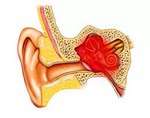Headaches, irritability, and fatigue can signal caffeine withdrawal. This article explains what’s happening in your body and offers nine practical tips for coping with these effects.
Many people consider reducing their caffeine intake for reasons like better sleep, reduced anxiety, or simply wanting to feel less wired. While the initial steps might feel manageable, unwelcome symptoms like headaches and difficulty focusing can quickly arise.
Caffeine withdrawal isn’t always dramatic, but it can be surprisingly impactful. Even moderate caffeine consumers might experience brain fog, irritability, or a general feeling of being “off” when they cut back. Given how common caffeine is—found in coffee, tea, soda, and energy drinks—it’s no wonder the body reacts when intake is reduced or stopped. Symptoms can range from annoying to disruptive, prompting many to question whether what they’s feeling is normal or a cause for concern.
While this transition is temporary, it can be uncomfortable. Understanding the physiological reasons behind withdrawal can help you feel more in control, and several strategies can lessen its intensity.
What is Caffeine Withdrawal?
Caffeine withdrawal is your body’s natural response to reducing or stopping regular caffeine intake. It’s a recognized condition studied in pharmacopsychology, characterized by specific symptoms and traits.
It’s important to understand that experiencing withdrawal doesn’t indicate a disorder. It’s a normal consequence when your body, accustomed to a consistent caffeine intake, suddenly has that supply removed.
When someone who regularly consumes caffeine suddenly cuts back, they experience both physical and mental symptoms. These typically emerge within 12–24 hours, peak around days two or three, and gradually improve within one to two weeks. For most people, caffeine withdrawal is uncomfortable rather than dangerous, but can be disruptive enough to impact daily life, especially if accompanied by headaches and fatigue.
What Causes Caffeine Withdrawal?
The root of caffeine withdrawal lies in how caffeine interacts with the brain. Caffeine acts as a central nervous system stimulant by blocking adenosine, a chemical that promotes drowsiness. Over time, the brain adapts by creating more adenosine receptors to counteract this blockage.
When caffeine is removed, those extra receptors remain active, allowing adenosine to flood the system and causing increased tiredness and sluggishness. Additionally, caffeine typically narrows blood vessels in the brain. Without it, these vessels widen, increasing blood flow and contributing to withdrawal headaches.
The body’s digestive, circulatory, and hormonal systems are also affected. This recalibration accounts for the variability in withdrawal symptoms and explains why the process feels more intense for some individuals—depending on their system’s response to caffeine and how it adjusts when consumption changes.
How to Alleviate Caffeine Withdrawal: 9 Tips to Reduce the Effects
While completely avoiding caffeine withdrawal isn’t always possible, particularly for those who have been regular consumers, you can make the process more manageable. Focus on supporting your body as it resets.
Here are nine tips, grounded in research and real-world experience:
- Reduce Gradually Instead of Quitting Cold Turkey
Abruptly stopping caffeine is the fastest route to intense withdrawal. If you usually drink three cups of coffee daily, try reducing it to two for a few days, then one, and eventually switch to tea or decaf.
A gradual taper allows your brain time to adjust, avoiding the shock of sudden headaches and fatigue.
- Stay Hydrated
Dehydration can worsen headaches, a common withdrawal symptom. Aim for consistent hydration throughout the day, even when not thirsty. Use reminders like large water bottles or phone notifications.
Flavor plain water with lemon, cucumber, or fruit juice. Herbal teas (chamomile, peppermint, rooibos) provide hydration and offer a soothing alternative to coffee.
- Prioritize Sleep and Rest
Without caffeine masking fatigue, you might feel tired more quickly. Instead of fighting it, give your body extra rest.
Consider going to bed 30 minutes earlier, taking a power nap, or creating a relaxing bedtime routine.
- Consider Lower-Caffeine Swaps
If it’s the ritual of coffee you enjoy, try switching to green tea, black tea, or decaf. You’re still holding a warm mug, but with less caffeine.
Green tea contains less than half the caffeine of coffee and includes L-theanine, which can help prevent energy dips. Other options are matcha or herbal teas. This gradual step-down is gentler than an abrupt stop and allows you to maintain a familiar routine.
- Use Short-Term Pain Relief if Necessary
Over-the-counter medications like ibuprofen or acetaminophen can help with caffeine withdrawal headaches. Use them sparingly and as directed, as relying on them too much can lead to rebound headaches.
Natural remedies like a cold compress on your head or a warm shower can also provide relief.
- Build Energy-Boosting Habits
Without caffeine, find other ways to feel energized. Try opening a window for fresh air, listening to upbeat music, or getting sunlight exposure.
Chewing mint gum or splashing cold water on your face can also provide a quick refresh. Experiment and find what works best for you.
- Be Gentle With Yourself
Patience is key. Caffeine withdrawal isn’s a personal failing, and it takes time for your body to adjust.
If you have a cup of coffee, don’t view it as a failure. It simply means your system needs a slower approach. Withdrawal symptoms typically peak within 2–3 days and fade within a week or two.
- Understand Potential Dangers
Caffeine withdrawal isn’t typically dangerous, but symptoms like fatigue and irritability can disrupt daily life.
- Switching to Tea or Decaf
Switching to tea or decaf is a gradual decrease that will decrease the potential symptoms of withdrawal, since it’s less caffeine than coffee.
Caffeine Withdrawal FAQs
How long does caffeine withdrawal usually last?
Symptoms typically emerge within 12–24 hours, peak around days two or three, and improve within a week or two. Some individuals experience lingering fatigue or mood changes for up to two weeks.
Is caffeine withdrawal dangerous or just uncomfortable?
It’s generally uncomfortable but not dangerous. While disruptive, symptoms usually pass as the body resets.
Can drinking tea or decaf coffee help with caffeine withdrawal?
Yes! Lower-caffeine alternatives ease the transition by providing a gentler reduction in intake.
Why do I get such bad headaches when I skip coffee?
Caffeine constricts blood vessels in the brain. When caffeine is removed, these vessels widen, causing headaches. Hydration, rest, and medication can help.
What’s the easiest way to quit caffeine without feeling awful?
A gradual reduction, swapping to lower-caffeine options, and prioritizing self-care are the most effective strategies.


























